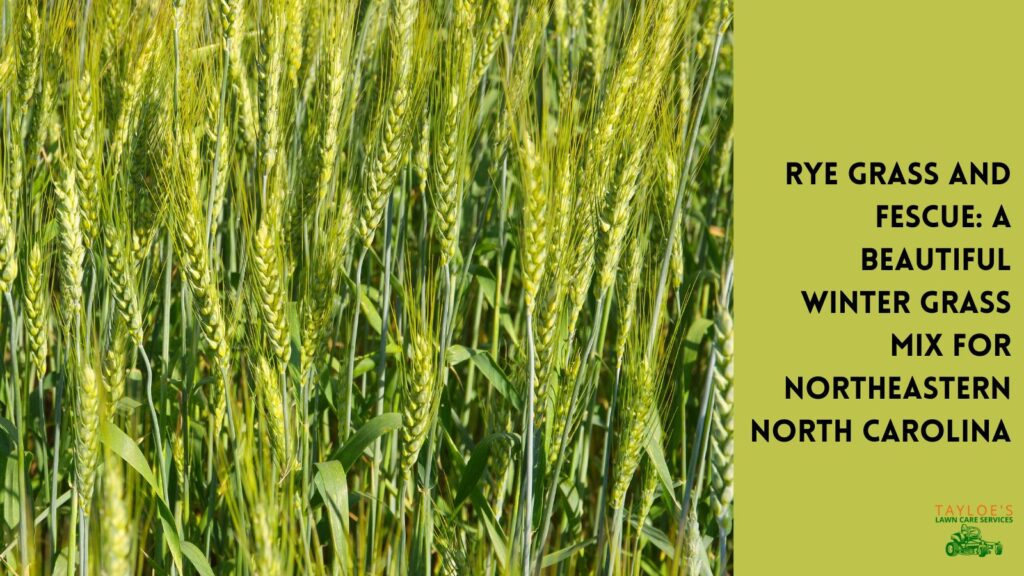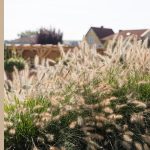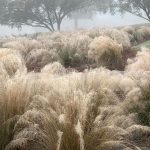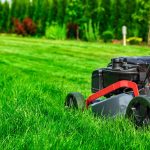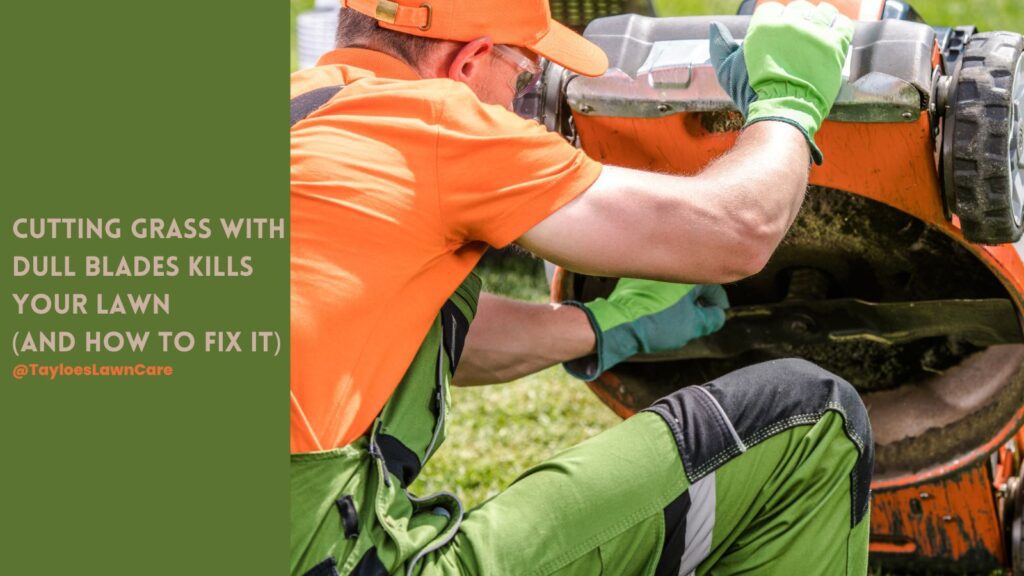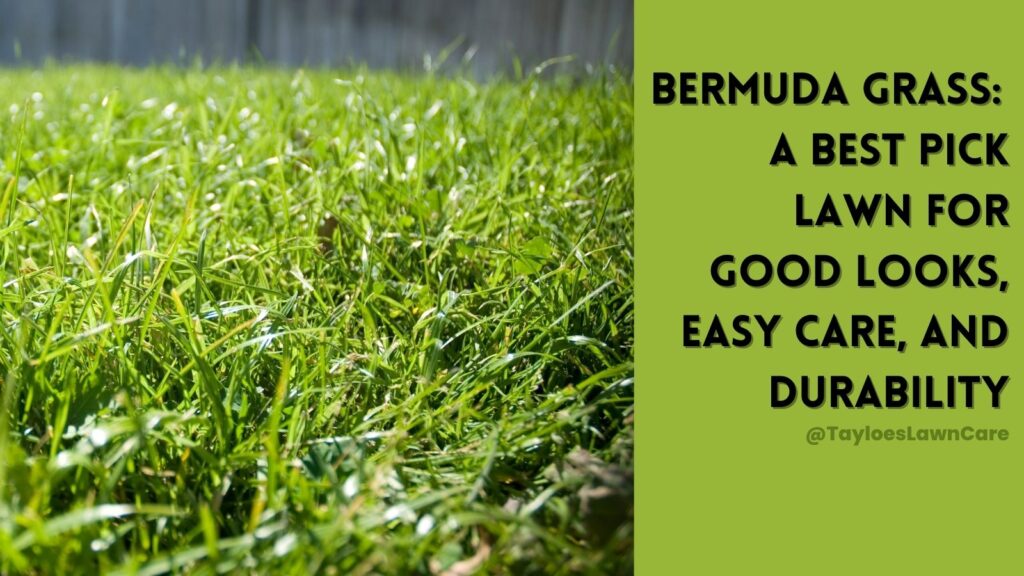Last Updated on: 7th August 2024, 08:52 am
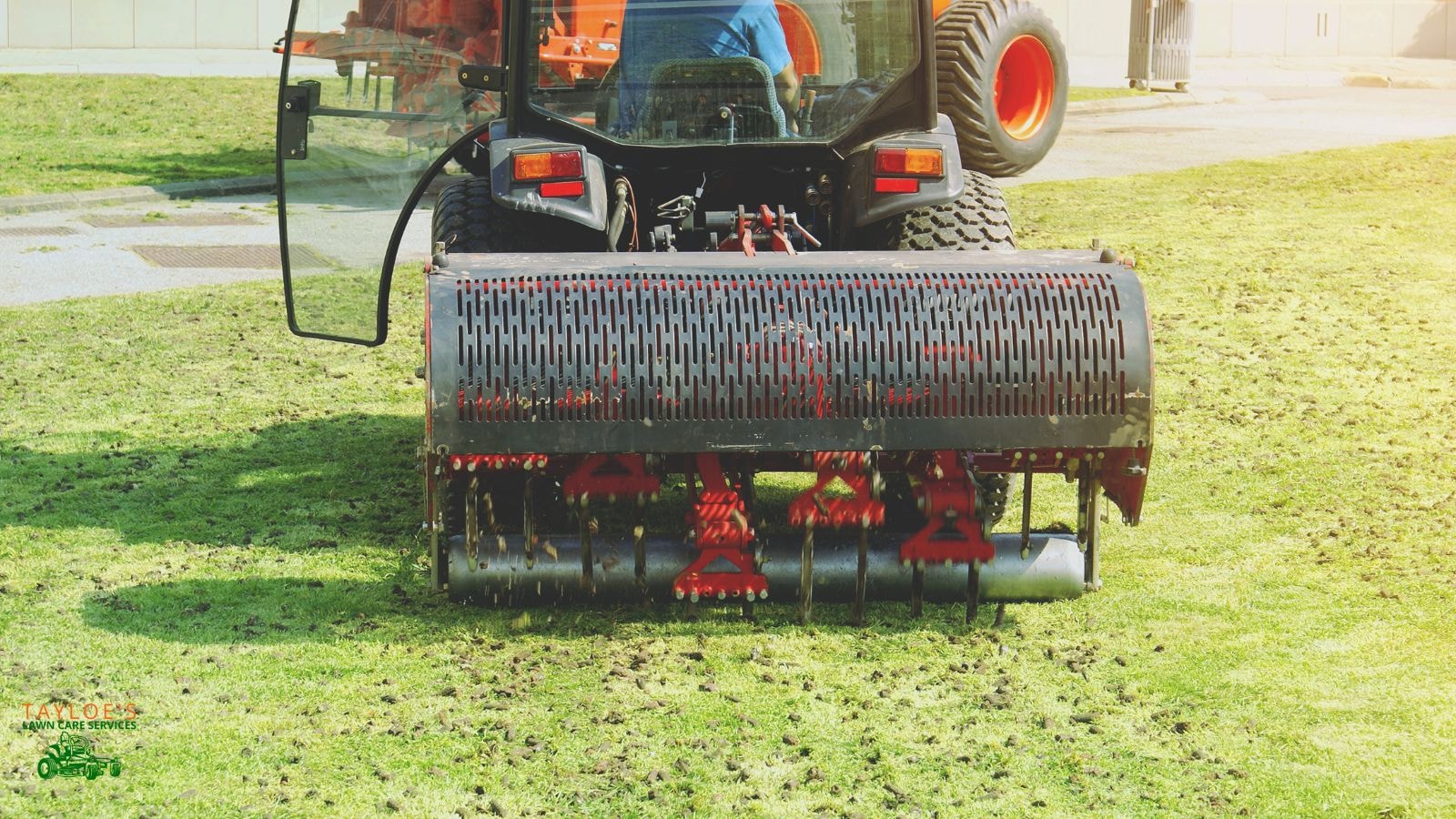
Understanding why aerating your lawn is important
Aeration is the process of creating small holes in the soil. Why should you aerate the lawn? Because it can allow air, water, and nutrients to reach the grass root system. It helps relieve soil compaction, preventing water and nutrients from penetrating the surface. Aeration is essential for maintaining a your lawn, as it promotes healthy turf growth and reduces the risk of disease and pest infestations.
Join us as we discuss why you can aerate in the late spring or summer months, but fall is really the ideal time.
Signs Your Lawn Needs Aeration
If your grass isn’t filling your lawn like it used to, or if it has lost its rich green color, your soil may be compacted and need aeration. You might also notice rainwater puddles in certain spots of your property, which may indicate the water can’t penetrate compacted soil.
It may need aeration if your lawn has thin, weak, or dying grass. Compacted soil can also cause uneven growth and discoloration.
The Benefits of Lawn Aeration
Why should lawn owners invest in aerating your lawn?
Aeration significantly promotes healthy soil by increasing the flow of oxygen, water, and nutrients to plant roots. The process allows essential elements to reach the roots more efficiently. This enhanced access to oxygen, water, and nutrients encourages deeper root development, leading to a stronger and more resilient lawn. Regular aeration helps grass plants become healthier, making them better able to withstand drought, heat, and other environmental stresses.
Another major benefit of lawn aeration is the reduction of soil compaction. Compacted soil makes it difficult for roots to grow and water and nutrients to penetrate the surface. Aeration helps to break up compacted soil, creating more space for roots to expand and absorb nutrients. This process improves the soil’s overall structure and drainage. As a result, water makesmore direct contact the deeper layers, reducing runoff and erosion.
Aeration also plays a key role in reducing the risk of disease and pest infestations. Dense, healthy grass plants are less susceptible to diseases and pests, which often take advantage of weak or stressed plants. By promoting vigorous root growth and enhancing the lawn’s overall health, aeration helps create an environment where grass can outcompete weeds and resist diseases. The increased airflow through the soil and grass canopy also helps dry out excess moisture, reducing the likelihood of fungal infections. Additionally, healthy, well-aerated lawns are less likely to develop thatch—a layer of dead grass and roots that can harbor pests and pathogens.
It is especially necessary for lawns with heavy clay soil. Clay soils are notorious for becoming compacted, making it difficult for grass roots to penetrate and for water to drain properly. Aeration is particularly beneficial for these types of soils, as it helps to break up the dense clay and improve its structure. By aerating heavy clay soils, you increase the lawn’s ability to absorb water and nutrients, leading to a healthier and more attractive lawn.
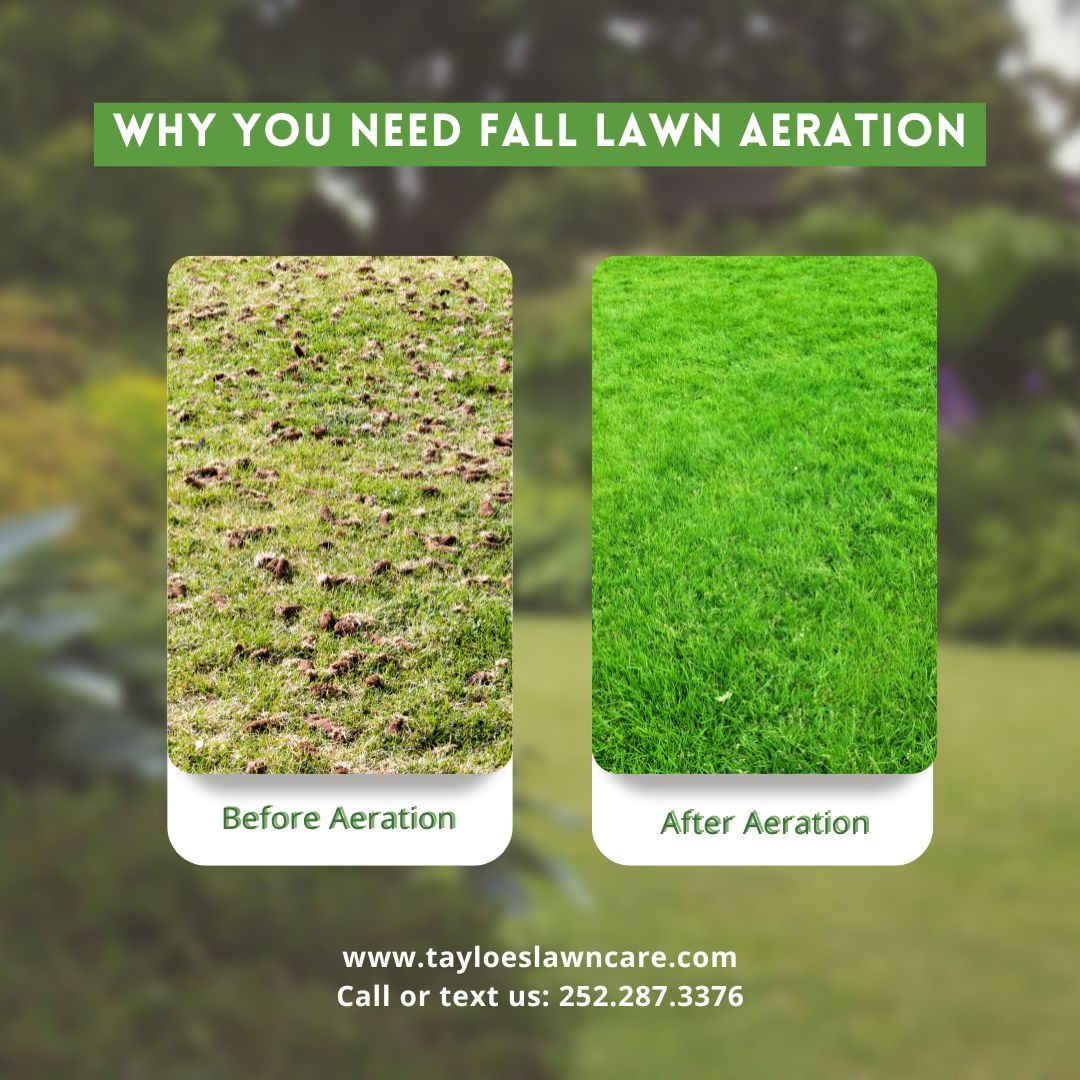
How Aerating Your Lawn Improves Soil Health
Aeration helps break up compacted soil. After doing this, you better permit water and nutrients to reach the grass’s roots. It also helps reduce thatch buildup, creating a perfect environment for pests and fungi to reproduce and thrive. By improving soil health, aeration can help promote healthy grass growth and reduce the need for fertilizers and pesticides.
Choosing the Right Time to Aerate (Fall in North Carolina)
Fall is considered the best time to aerate the lawn for several reasons:
Optimal Soil Conditions
The soil is often moist and soft during the fall, making it easier for the aeration equipment to penetrate the ground. This helps create more effective aeration holes, allowing air, water, and nutrients to reach the grassroots more efficiently.
Reduced Weed Growth
Aerating in the fall helps to reduce weed competition. Many weeds, particularly aggressive summer weeds, are not actively growing during this time. Your turf can recover and grow without the stress of competing weeds.
Enhanced Root Growth
Fall aeration promotes stronger root development. Cool-season grasses, common in many lawns, experience their peak growing period in the fall. Aerating during this time helps the root zone expand and strengthen, leading to a healthier lawn.
Ideal Growing Conditions for New Grass
The combination of cooler temperatures and increased rainfall in the fall provides an ideal environment for grass to recover and thrive after aeration. These conditions help the grass grow more vigorously, filling in the small plugs’ holes.
Preparation for Winter
Aerating in the fall prepares the lawn for the winter months. By alleviating soil compaction and improving root health, your lawn is better equipped to handle the stress of colder soil temperatures and reduced sunlight, for faster green-up in the spring.
Methods of Aeration
Core aeration (aka plug aeration) is the most popular and effective method of aeration for homeowners and lawn professionals. It removes soil cores rather than tamping the soil down deeper into the ground or making cuts.
Tayloe’s Lawn Care Services uses core aeration to help our clients enjoy thick grass that stands up to foot traffic. After making the small cores, you will see plugs lying across your lawn. Leave them there – you want the open holes to permit nutrients and water to penetrate the turf. These soil plugs will break down naturally over the next few weeks, returning to a neater appearance on their own.
Other methods of aeration besides core aerators include spike aeration using hollow tines or using special blades that make deep cuts into the grass.
Overseeding and Aeration in the Fall
Overseeding refers to the spreading of new grass seed over the existing lawn to fill in bare spots and thicken up the turf. Aeration and overseeding can be done together to promote healthy grass growth and improve soil health. By aerating and overseeding, you can give new grass seeds the best chance at growing thick, healthy, and robust.
If you plan to plant winter grass seeds, such as Kentucky bluegrass, tall fescue, or rye grass seed, to have a green lawn when winter hits, fall aeration will help.
Preparing Your Lawn for Aeration
Remove any debris or obstacles from the lawn surface before aerating. Water the lawn the day before aeration to make the soil easier to aerate.
Post-Aeration Care
After aeration, keep the lawn moist to help the soil and grass recover. Apply a starter fertilizer to promote healthy grass growth. Keep the lawn mowed at the recommended height to promote healthy growth.
Maintaining a Healthy Lawn
Aerating can help to maintain lawn health by promoting robust grass growth and reducing the risk of lawn diseases and pest infestations.
Combine aeration with other lawn care practices, such as mowing, watering, and applying fertilizer, to keep your lawn thriving. If you don’t have the time or expertise, consider hiring our lawn professionals at Tayloe’s Lawn Care to aerate and maintain your lawn.
Need Fall Aeration Services? Connect With Tayloe’s Lawn Care Services Today
Aeration is essential to maintaining lawn health. It promotes beautiful growth now and into the next growing season. Turf with deeper roots also reduces the risk of disease and pest infestations.
By understanding the benefits of aeration and how to aerate your lawn, you can give your lawn the best chance at growing thick, healthy, and robust. Combine aeration with other lawn care practices to keep your lawn healthy and thriving. We will be glad to discuss new seed (ryegrass) for the winter and fertilizer to keep your turf looking great, even in the winter.
If you need your lawn aerated or overseeding service, contact Tayloe’s Lawn Care Services, LLC, and get on our fall schedule today. Call or text us @ 252.287.3376.
Author Profile

- Randy Tayloe is the COO of Tayloe's Lawn Care Service, LLC. He is a certified custom applicator, recognized by the North Carolina Department of Agriculture Pesticide Division. A native of Bertie County, NC, and graduate of Bertie High School, he wants to beautify his home county - one yard at a time.
Latest entries
 FaunaOctober 3, 2025Fall decorations that endanger wildlife (and how to avoid the risks)
FaunaOctober 3, 2025Fall decorations that endanger wildlife (and how to avoid the risks) GardeningApril 1, 2025Fountain grasses add colorful foliage and movement
GardeningApril 1, 2025Fountain grasses add colorful foliage and movement GardeningMarch 21, 2025White cloud muhly grass growing guide
GardeningMarch 21, 2025White cloud muhly grass growing guide Lawn CareFebruary 25, 2025Should I mow every week?
Lawn CareFebruary 25, 2025Should I mow every week?

